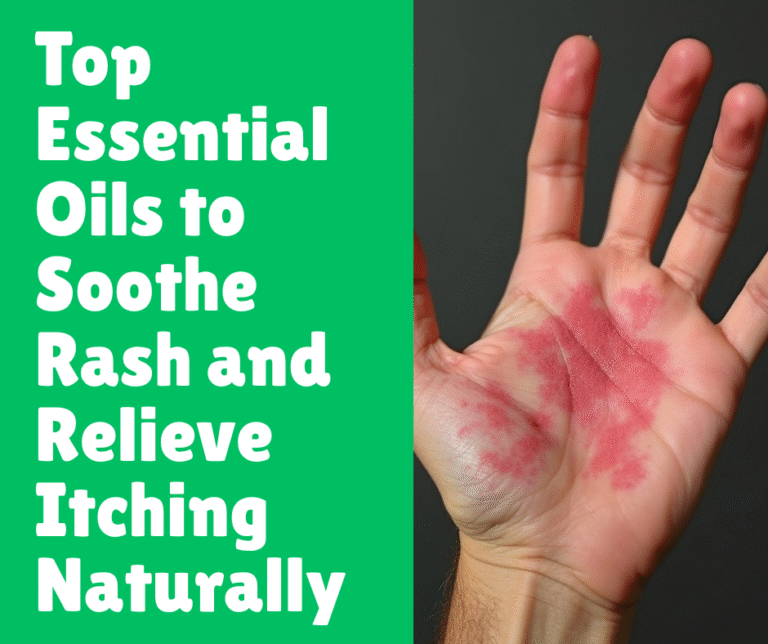How Natural Remedies for Fever Relief Can Help You Feel Better Fast
Post Disclaimer
Content on this site is for educational use only and not a substitute for medical advice. Herbal remedies are based on traditional knowledge and not medical recommendations. Please consult a healthcare professional before trying any herb. We do not assume responsibility for any outcomes or adverse effects resulting from the use of information provided here.
Fever can be uncomfortable, making you feel achy, fatigued, and generally miserable. While it’s often a sign that your body is fighting an infection, it can still make you want relief.
Medications are the typical route most people take when fever strikes, but what if you could find comfort through natural remedies?
In this blog post, I’ll explore several natural methods to alleviate fever symptoms. From herbal teas to home remedies you may already have in your pantry, I’ll walk you through different strategies you can try at home.
These remedies have been used for centuries and continue to be effective ways to manage fever without the side effects that sometimes accompany conventional medications.
So, if you’re looking for a more natural approach to fever relief, keep reading. I’ll share everything from simple lifestyle tweaks to more in-depth solutions to help you feel better quickly.
Herbal Teas: Nature’s Soothing Solution
One of the simplest ways to bring down a fever is by drinking herbal teas. Many herbs have natural cooling effects that help regulate your body temperature, while others contain compounds that can fight the infection causing the fever.
Popular Herbal Teas for Fever Relief
- Peppermint Tea: Peppermint has menthol, which naturally cools the body and can promote sweating a natural way for your body to release heat.
- Ginger Tea: Ginger is known for its ability to help your body sweat it out. It also supports your immune system and can soothe your throat if you’re experiencing chills.
- Chamomile Tea: Chamomile is a calming herb that not only helps to reduce fever but also alleviates stress and promotes restful sleep, which is key when you’re sick.
- Elderflower Tea: Elderflower has long been used in traditional medicine for its fever-reducing properties. It helps promote sweating, which in turn helps bring down a fever.
How to Make a Fever-Relief Tea
- Boil water in a kettle or on the stovetop.
- Add 1-2 teaspoons of dried herbs (or use a tea bag) to a teapot or mug.
- Pour hot water over the herbs and steep for 5–10 minutes.
- Strain the tea, add honey or lemon if desired, and sip slowly.
Tip: Drinking these teas regularly while you’re running a fever can help you stay hydrated, which is crucial for recovery.
Hydration: A Key to Fever Relief
When you have a fever, your body tends to sweat more, and this can lead to dehydration. Staying hydrated is crucial not only to help regulate body temperature but also to support your immune system in fighting off the infection.
Best Fluids for Fever
- Water: The simplest and most effective choice. Drinking water helps replace fluids lost through sweating and keeps your body functioning properly.
- Electrolyte Drinks: Drinks like coconut water or sports drinks (in moderation) can help replenish electrolytes that are lost through sweat.
- Broths: Warm broths are soothing and can help you stay hydrated while also providing nourishment.
How to Stay Hydrated
- Keep a water bottle nearby and take small sips throughout the day.
- Try to aim for at least 8–10 cups of fluids a day.
- If you can’t stomach water, opt for herbal teas, fresh fruit juices, or broths.
During a fever, I always find that sipping on warm liquids feels comforting. It not only keeps me hydrated but also helps me feel a little more settled in my body when I’m feeling particularly chilled.
Cool Compresses: Bringing Down the Heat
If you’re looking for immediate relief, cool compresses can help regulate your body temperature without the use of medication. This technique works by allowing your body to release some of the heat trapped inside, providing fast comfort.
How to Use Cool Compresses
- Soak a washcloth or small towel in cool (not cold) water.
- Wring out any excess water, then place the cloth on your forehead, back of the neck, or wrists.
- Leave the compress on for 10–15 minutes, then repeat as needed.
Tip: Never use ice-cold compresses, as extreme temperature changes can cause your body to go into shock. You want a cool, gentle effect to help bring your fever down naturally.
Rest and Relaxation: Let Your Body Heal
One of the most important things you can do when you’re running a fever is to rest. Your body is fighting an infection, and it needs energy to do so. By giving yourself permission to rest, you support your immune system’s natural healing process.
Resting Strategies for Fever Relief
- Get plenty of sleep: Sleep is essential for your immune system to function at its best. If you’re having trouble falling asleep, try listening to calming music or practicing relaxation techniques.
- Limit activity: While it can be tempting to get up and do things around the house, try to avoid exerting yourself. Focus on staying comfortable and relaxed.
- Create a calming environment: Dim the lights, reduce noise, and make your environment cozy to help promote a restful atmosphere.
Case Study: A friend of mine, who frequently gets colds, swears by staying in bed with a warm blanket and a good book (or nap). She says it’s not just the sleep that helps—it’s the mental relaxation. Being in a calm, peaceful environment helps her body recover faster.
Nutritional Support: Food for Healing
What you eat can have a significant impact on how you feel during a fever. Eating light, easily digestible foods helps prevent your digestive system from working too hard. You want to nourish your body without overwhelming it.
Best Foods During a Fever
- Soups and broths: These are easy on the stomach, provide hydration, and offer nutrients to help with recovery.
- Fruits and vegetables: Packed with vitamins and antioxidants, these can help boost your immune system. Try fruits like oranges, apples, and berries, or vegetables like spinach and kale.
- Yogurt: Contains probiotics that can support gut health, which is tied to your immune function.
What to Avoid During a Fever
- Heavy, greasy foods: These can stress your digestive system and make you feel worse.
- Sugary snacks and drinks: High sugar intake can reduce immune function and prolong the illness.
Common Mistakes to Avoid
While using natural remedies to relieve a fever, there are a few common mistakes people often make. Avoid these pitfalls to ensure you’re getting the most effective relief:
Relying solely on cold compresses: While they’re helpful, they should not be your only method. Pairing them with hydration and rest is key.
Drinking too much caffeine: Caffeine can be dehydrating and may worsen symptoms like irritability or headaches.
Ignoring severe symptoms: If your fever reaches above 103°F (39.4°C) or lasts for several days, it’s time to seek medical help.
Conclusion: Finding What Works for You
Fever is an uncomfortable yet natural part of healing, and while medications can help, there’s no reason not to try natural remedies as well. From herbal teas to hydration, rest, and cooling compresses, there are many gentle ways to manage your fever at home.
It’s important to remember that everyone’s body is different, so what works for one person may not work for another.
I recommend trying a combination of these remedies to see which ones bring you the most comfort. And, of course, if your symptoms worsen or don’t improve, don’t hesitate to consult a healthcare professional.
- Herbal teas, hydration, and rest are key to managing fever naturally.
- Cooling compresses can help regulate body temperature.
- A gentle diet of easy-to-digest foods supports the body’s healing process.
- Avoid common mistakes like relying solely on cold compresses or neglecting severe symptoms.
If you’ve tried any of these remedies or have other tips, I’d love to hear about your experiences. Drop a comment below and share your thoughts!
And if you found this post helpful, don’t forget to share it with friends or family who might need a little fever relief.
FAQs
What is the best natural remedy for reducing fever?
The best remedies for reducing fever include drinking herbal teas (like peppermint or ginger), staying hydrated, using cool compresses, and getting plenty of rest. These methods help your body cool down and recover naturally.
Can herbal teas really help reduce fever?
Yes, herbal teas like peppermint, chamomile, and elderflower can help soothe your body, promote sweating, and lower your temperature. They are gentle and safe ways to relieve fever symptoms.
How much water should I drink when I have a fever?
It’s important to drink at least 8-10 cups of water per day to stay hydrated while running a fever. Herbal teas, broths, and electrolyte drinks can also help maintain hydration.
Is it safe to use cold compresses to reduce fever?
Cold compresses can help cool your body down, but make sure the water is cool, not ice-cold. Applying a cool compress for 10–15 minutes can be effective, but avoid extreme temperature changes.








